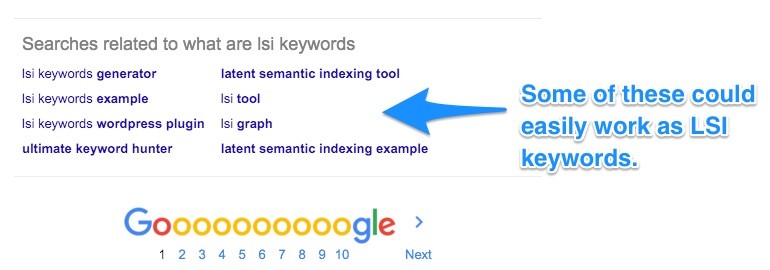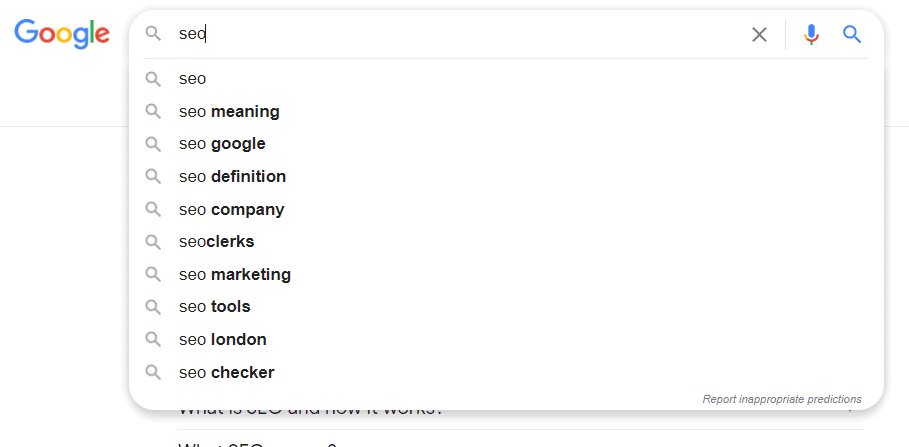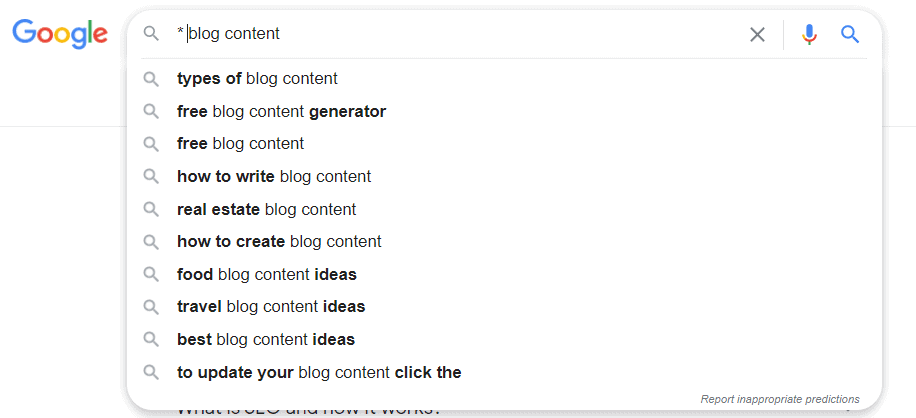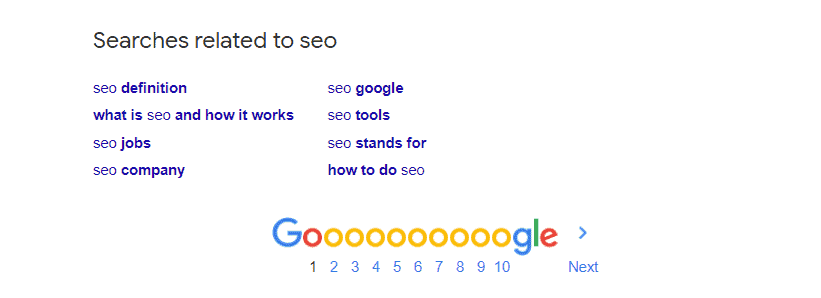Choosing the right keywords is essential if you want to be successful with your organic growth and SEO strategy.
In this article, we’re going to be exploring how to choose the right keywords for SEO. We’ll also be diving into a number of little-known strategies you can use to identify high-traffic AND high-profitability keywords for your business.
These keywords can then be used to create new website content or blog content that will help you boost your organic rankings in search engines like Google.
It’s worth saying here that before starting an SEO campaign, you should make sure you have solid foundations in place. This includes things like optimising you title-tags and meta-descriptions. I got into this in more detail in our blog how to identify you SEO quick-wins.
Firstly, we need to understand and get clear on the different types of keywords and search intent:
Understanding Keyword Types
So the first step to picking the right keywords for SEO is to understand the different types of keywords.
Keywords are typically broken down into 3 main categories:
- Short-tail keywords (also known as head, broad, or generic keywords)
- Mid-tail keywords
- Long-tail keywords
As you’ll see from the image below by SEMRush; the short-tail keywords have high search volume but are very broad in nature:

For that reason, they tend to have a much lower conversion rate because it’s a very vague search term.
We don’t know if the person searching “tomato plant” is looking for tips on caring for tomato plants, buying a tomato plant, or maybe they even just want to find out what a tomato plant is!
Short-tail keywords will also typically be much harder to rank for as they are highly competitive with tonnes of search results.
However, on the opposite end of the spectrum, high-tail keywords (often more of a phrase than a word) usually convert more of that traffic into leads because there is more intent behind the search.
For example, in the image above, we know this person is having an issue with their tomato plants turning yellow so we can address their concerns and offer them a relevent answer/solution.
With this in mind, you’ll want to make sure you’re finding long-tail keywords to create your content around to begin with.
Over time and as your domain/page authority grows, you’ll start naturally ranking for more short tail keywords too!
Understanding Search Intent
The next thing we need to understand is search intent. This is one of Google’s primary ranking factors and understanding it is essential for any successful SEO Campaign.
The search intent behind keywords can again be broken down into 3 buckets:
- Navigational
- Informational
- Transactional

Whether you’re creating a “services” page on your website or a “how to” blog, it’s important to be mindful of the intent behind that search.
You’ll want to be sure that the content on the page is delivering upon the intent of that specific search.
Understanding Latent Semantic Indexing (LSI) Keywords
In a nutshell, LSI keywords are search terms related to the main keyword you are targeting.
They help to support your content and add more context to it. This make’s it easier for both visitors and search engines to know what your content is about.
For example, as you’ll see in the image below, LSI tools and LSI graph could be considered related terms to somebody searching for Latent Semantic Indexing.

With this in mind, when you’re writing your content, you’ll want to think about a number of sub categories or topics that could potentially fall under the main topic.
This not only helps to bring more value to the reader but will also help Google understand the context and rank your page accordingly.
Auditing Your Current Organic Keyword Rankings
Now that we’re clear on how keywords work and the different types to be aware of; The first thing to do is to audit your current keyword rankings.
The reason for this is to help prioritise the keywords you’re targeting.
For example, we often speak to clients who spend insane amounts of time and money trying to rank for highly competitive keywords which they are currently not even ranking for.
However, they often have some great keywords (with high commercial intent) which they are already ranking for but are maybe at the bottom of page 1 or the top of page 2.
This is the kind of low-hanging fruit we want to start with on an SEO campaign because even the smallest increase in position on a page 1 and 2 ranking can make a significant increase to your traffic.
On the other hand, let’s say you had a keyword you’re currently ranked 99 for…
Even if you were to jump 50 positions, you would only see marginal (if any) increase in traffic!
Ubersuggest is a great free tool to check your current keywords; simply type in your website and head down to SEO Keywords to view your current keywords and their current position in the SERP (Search Engine Results Page)

How To Choose The Right Keywords For Your Blog/Website Content
Once you’ve checked your current keyword positions, you’ll want to work out where you’re high-priority keywords might be.
Don’t worry if you’re not ranking for any keywords of you don’t have any low-hanging fruit here.
I’ll be showing you how to find high opportunity keywords.
There’re two great strategies for doing keyword research and getting some initial keyword ideas.
First is using Google’s Autosuggest feature which gives you a list of suggestions other people have searched for when you begin typing a search into Google.
Google Autosuggest

The next is a little known technique that allows you to get additional ideas for any given topic.
Simply add an Asterix before any short-tail keyword and Google will give you a list of additional long-tail phrases people search for relating to that keyword as seen in the example below:

Google Related Searches
Another way to get keyword ideas is to just scroll to the bottom of the search engine results page and Google will give you a list of related searches.

Now that you’ve got a list of ideas for long-tail keywords, you’ll want to prioritise these by the amount of search volume and the difficulty to rank for that given keyword.
Here’s a few tools to help you with that.
Best Keyword Research Tools
Keywords Everywhere is a fantastic chrome extension that allows you to quickly and easily view the average monthly search volume for keywords in any search engine (including YouTube)

You’ll also see a rating for competition – this gives you an indication of how difficult that keyword would be to rank for.
When it comes to prioritising your SEO keyword strategy, you’ll want to prioritise the keywords with a decent search volume but low competition.
Whilst it might be alluring, keywords with 10,000+ monthly searches will be highly competitive and difficult to rank for.
So when you’re starting out, I’d recommend looking for keywords with between 10 to 1,000 searches per month and a low competition score.
You can then prioritise these further looking for the highest search volume and lowest competition keywords. Next you’ll want to start creating content targeting those high-priority keywords.
Once you’ve started ranking for a few of these keywords, you’ll start naturally start to pick up additional keyword rankings and can move onto more competitive keywords.
And there you have it! That’s how to pick the RIGHT keywords for your SEO strategy to ensure stable and solid growth over time.
If you’d like any additional advice on your SEO strategy be sure to book your FREE website & marketing audit today!
Want To Generate More Organic Traffic?
Book your FREE digital review today and we’ll record you a 10 minute video looking at your current SEO & keyword strategy and suggest some ways you could significantly increase your traffic, leads and sales!
- Highly-Effective DTC Marketing Strategies & Examples - February 28, 2024
- How To Set Paid Media Marketing Budget - October 16, 2023
- The Ultimate Guide To A/B Testing - September 23, 2023




